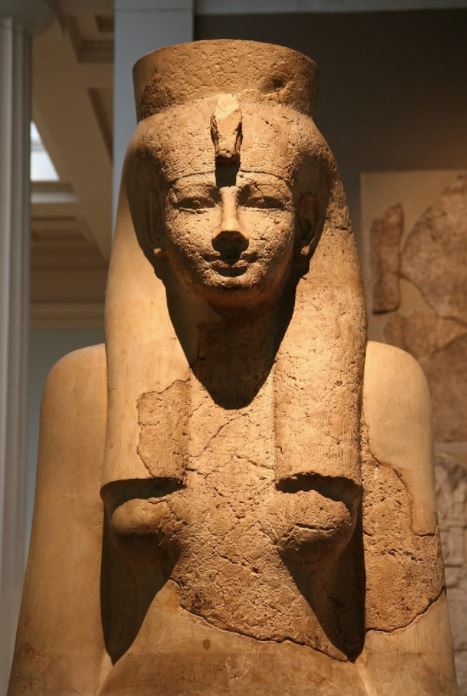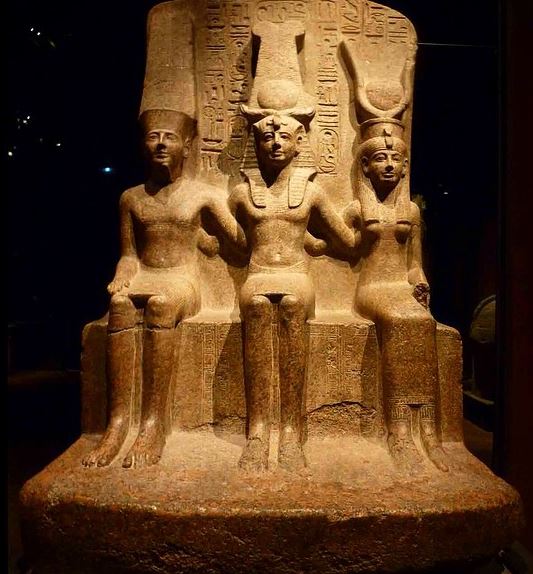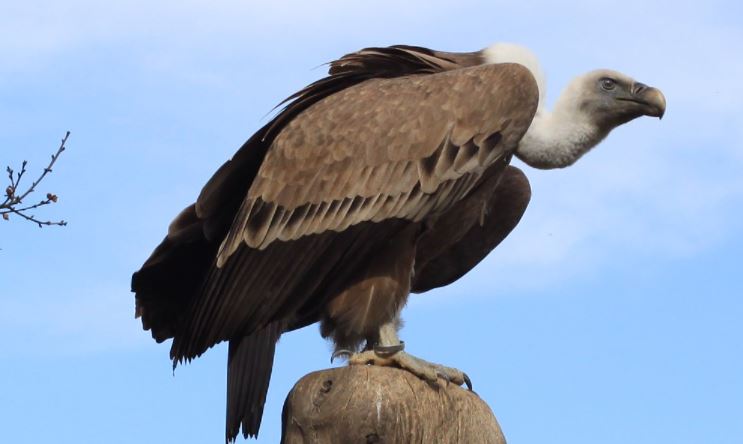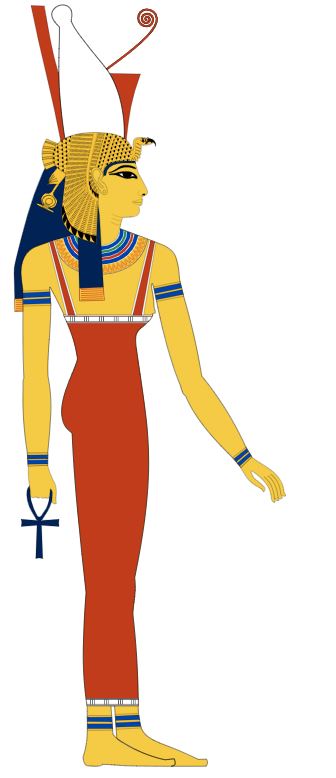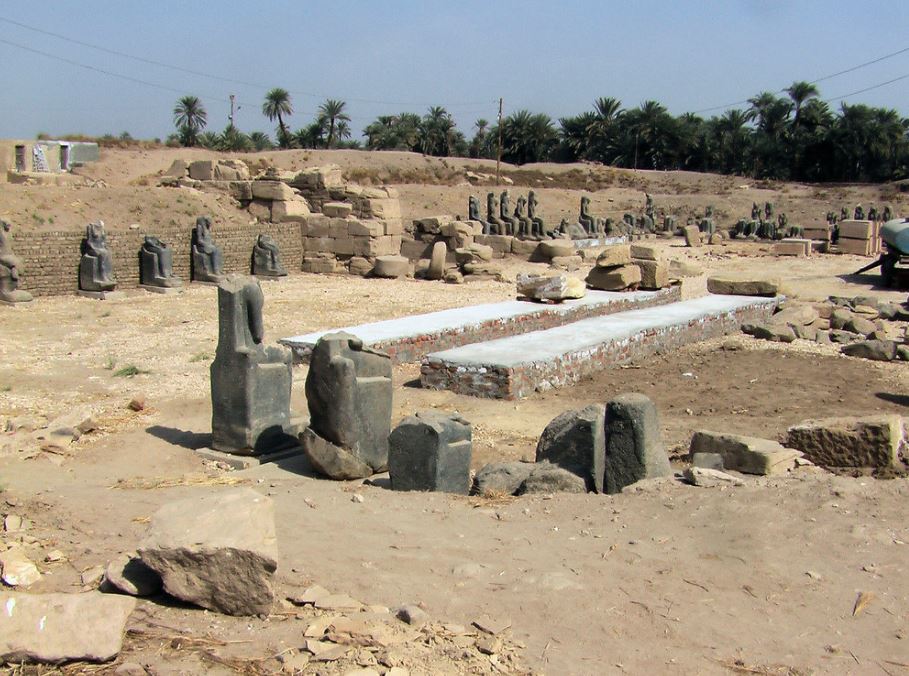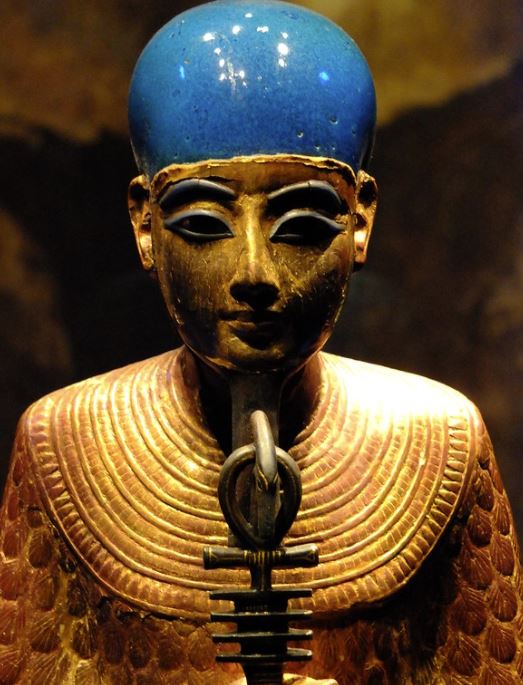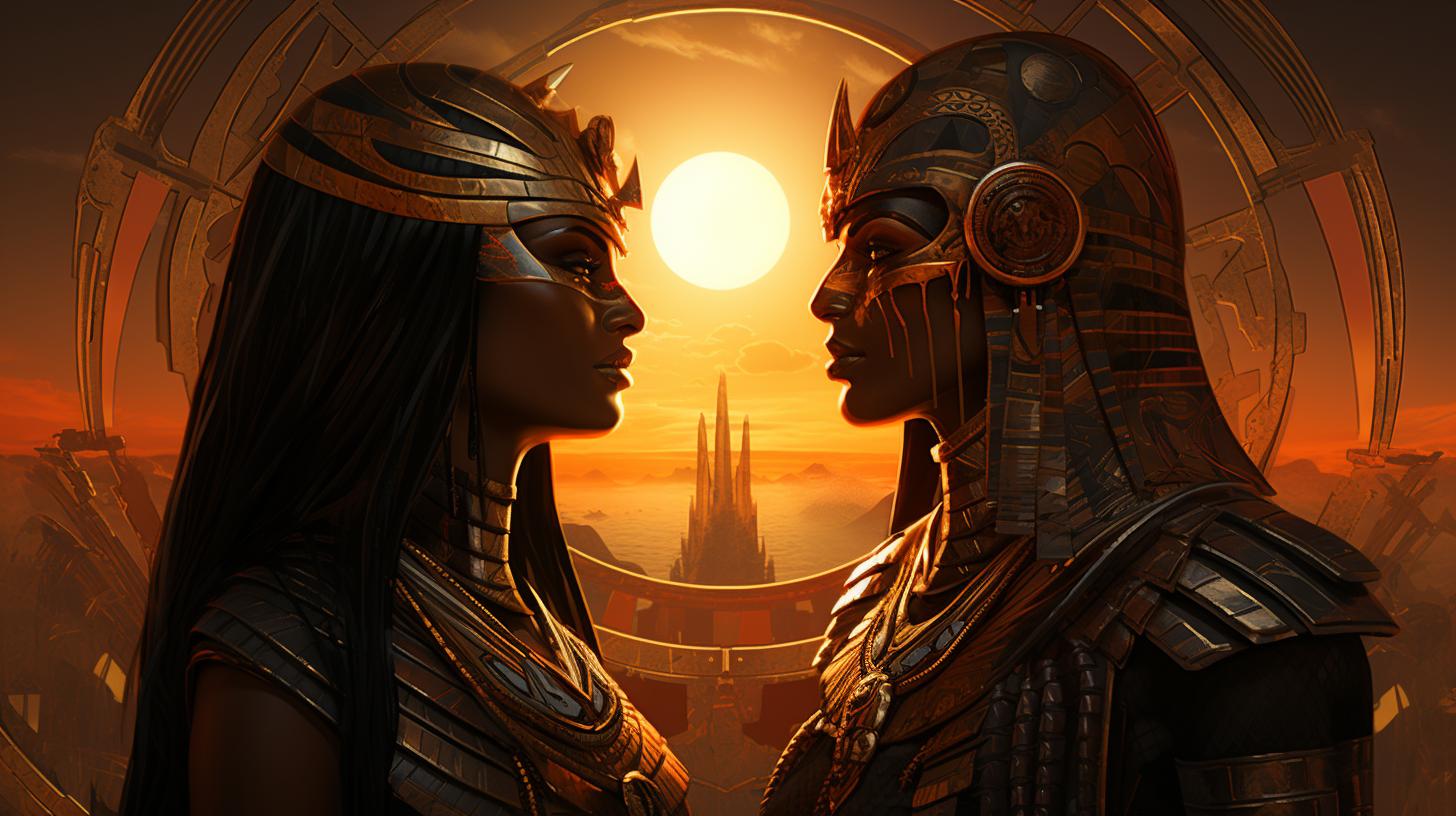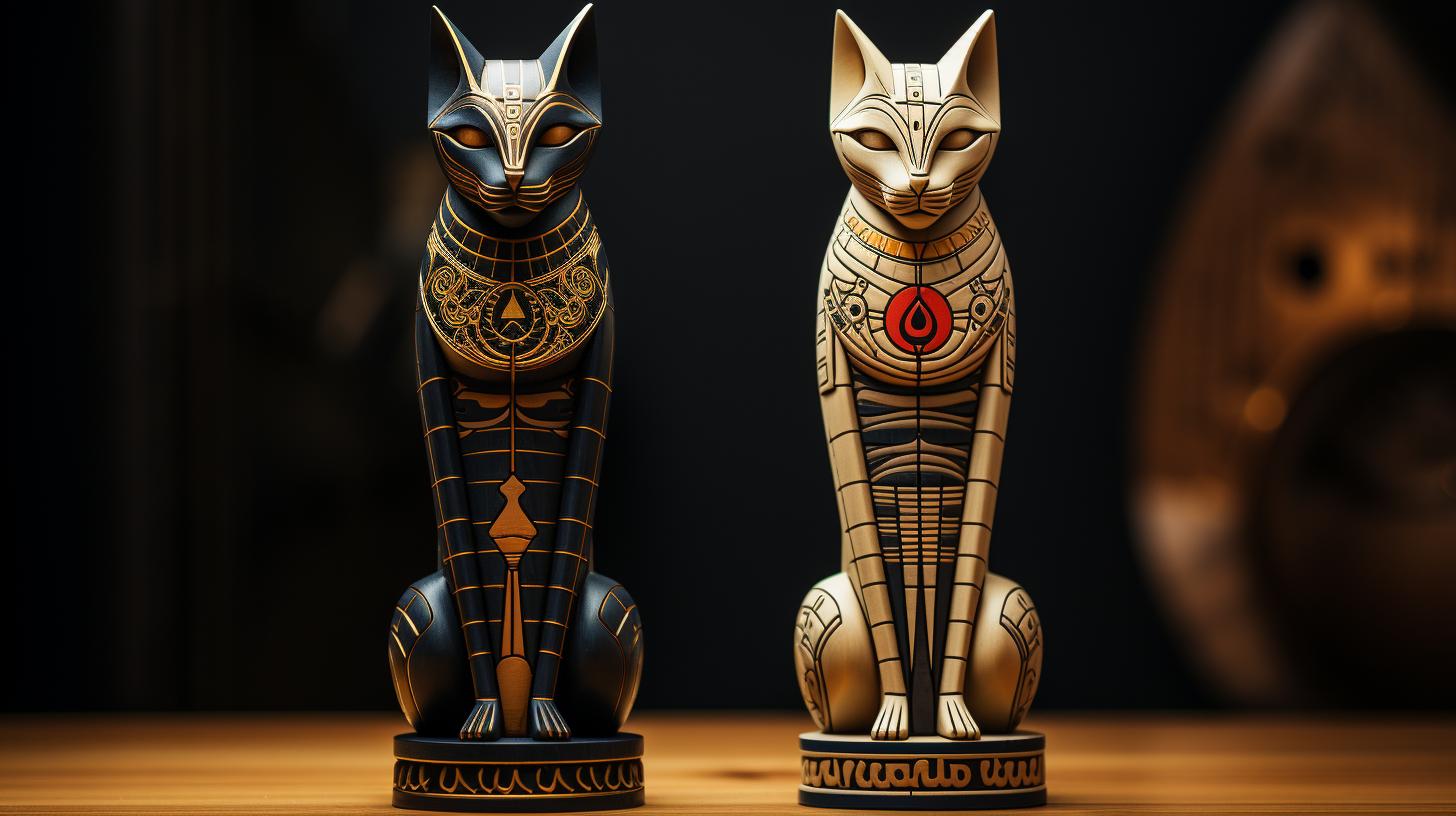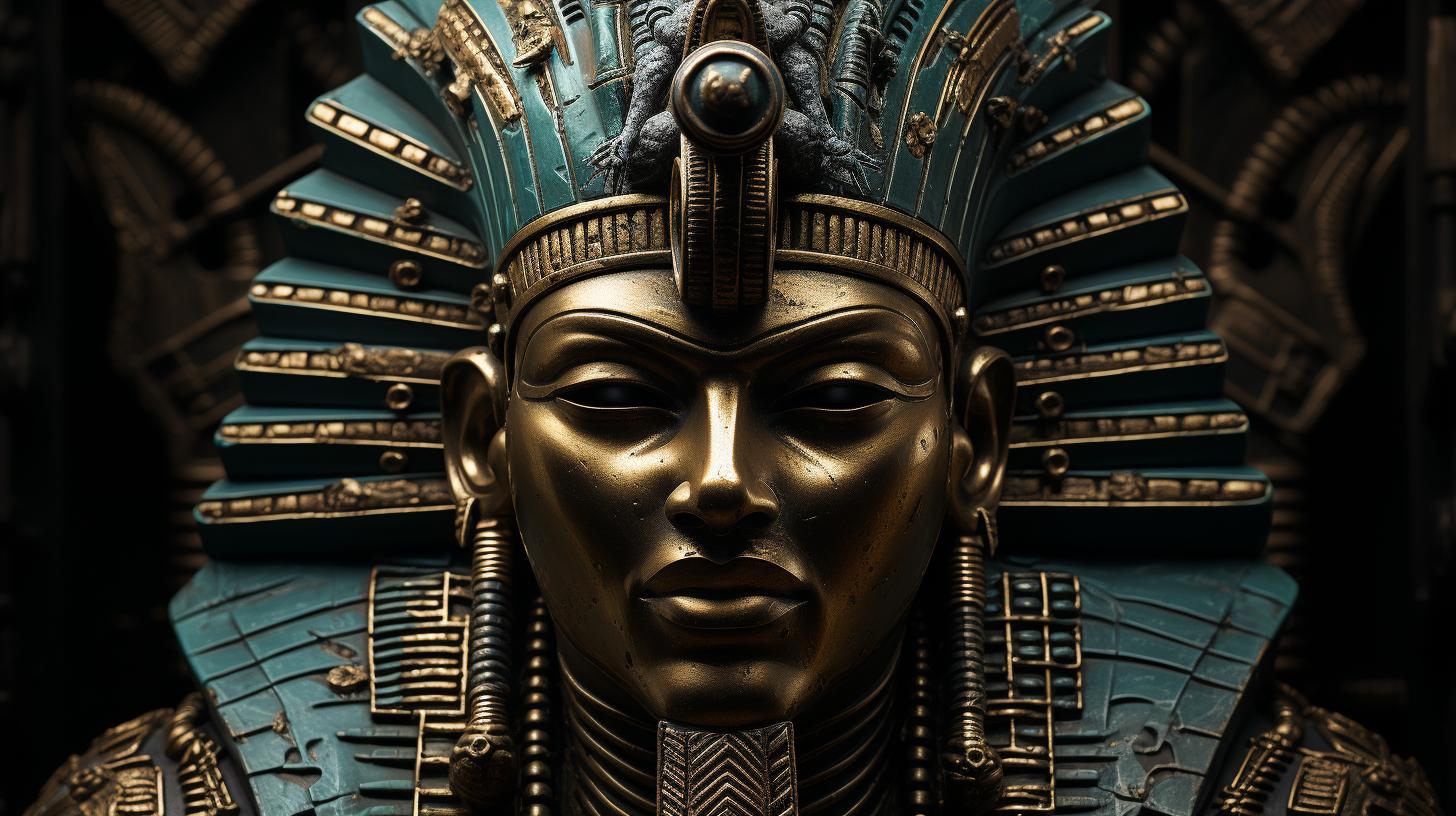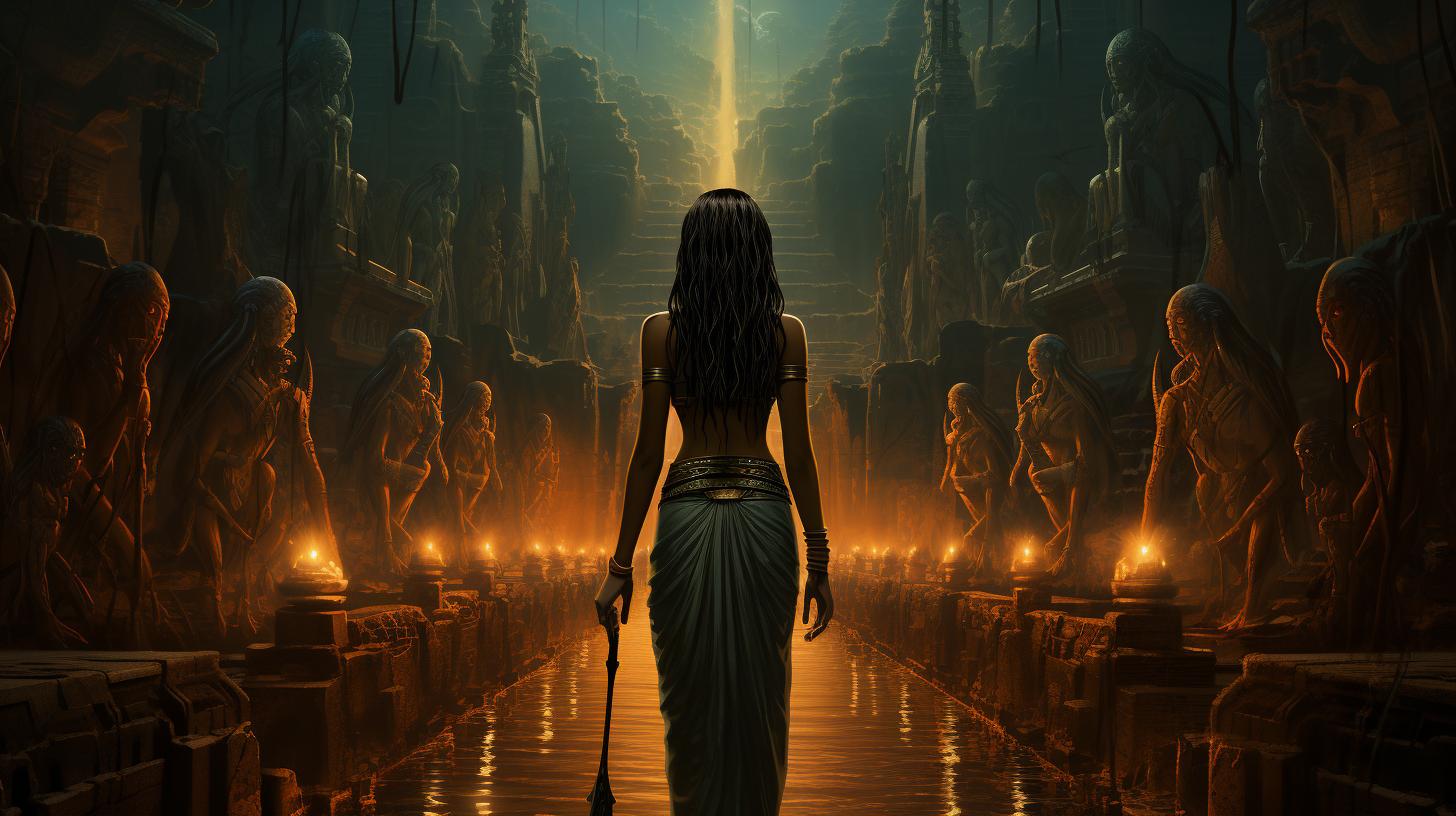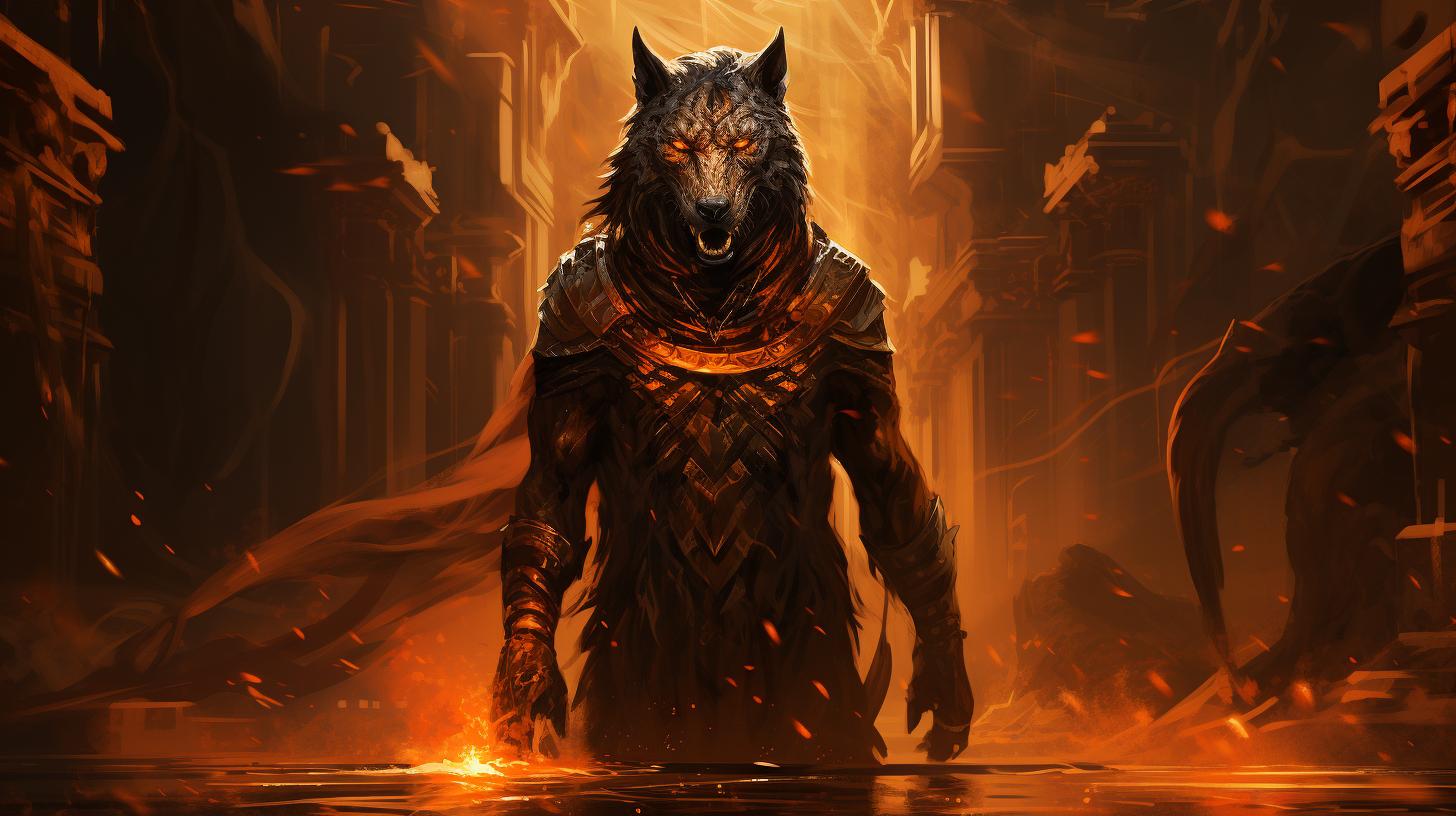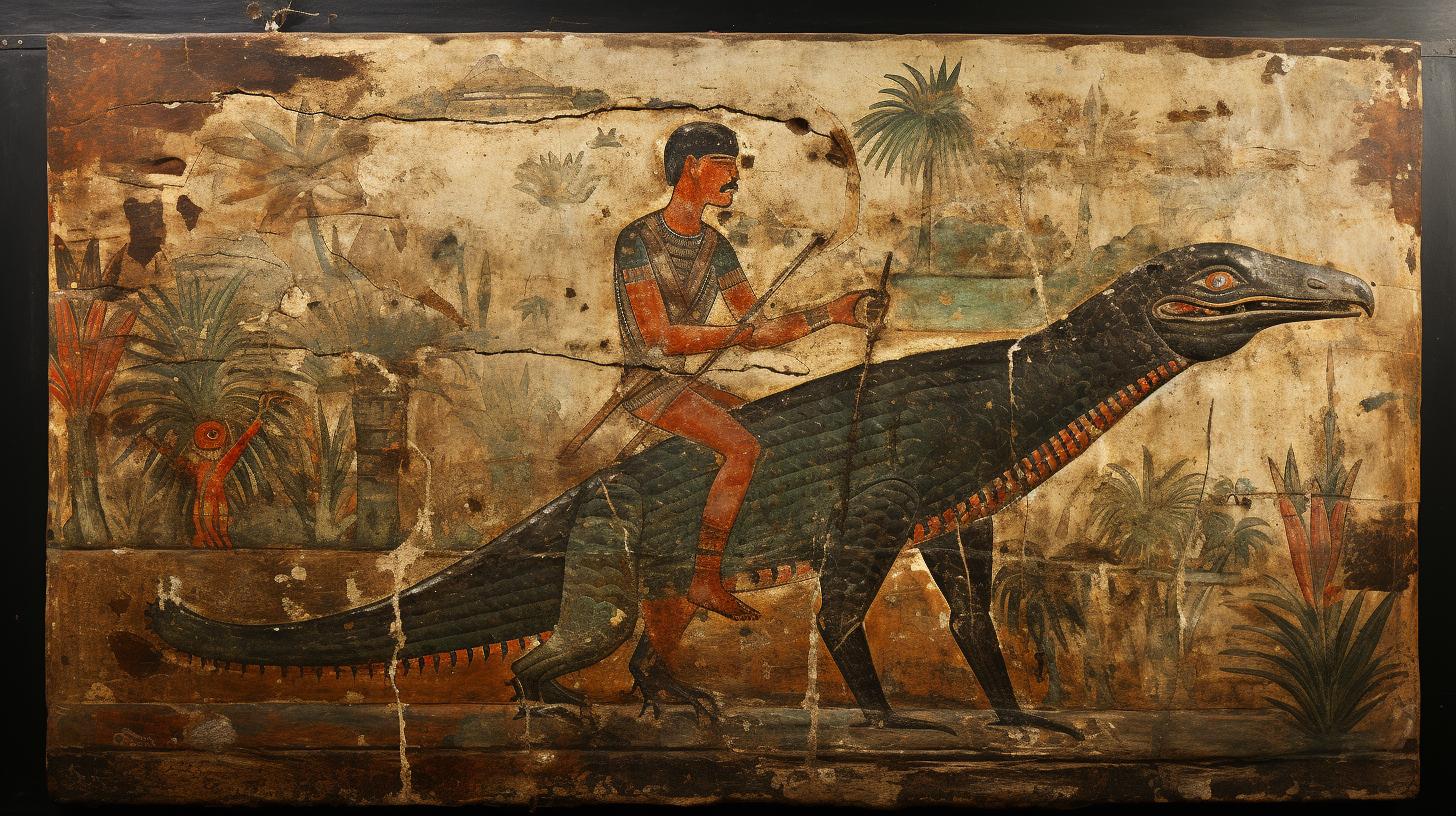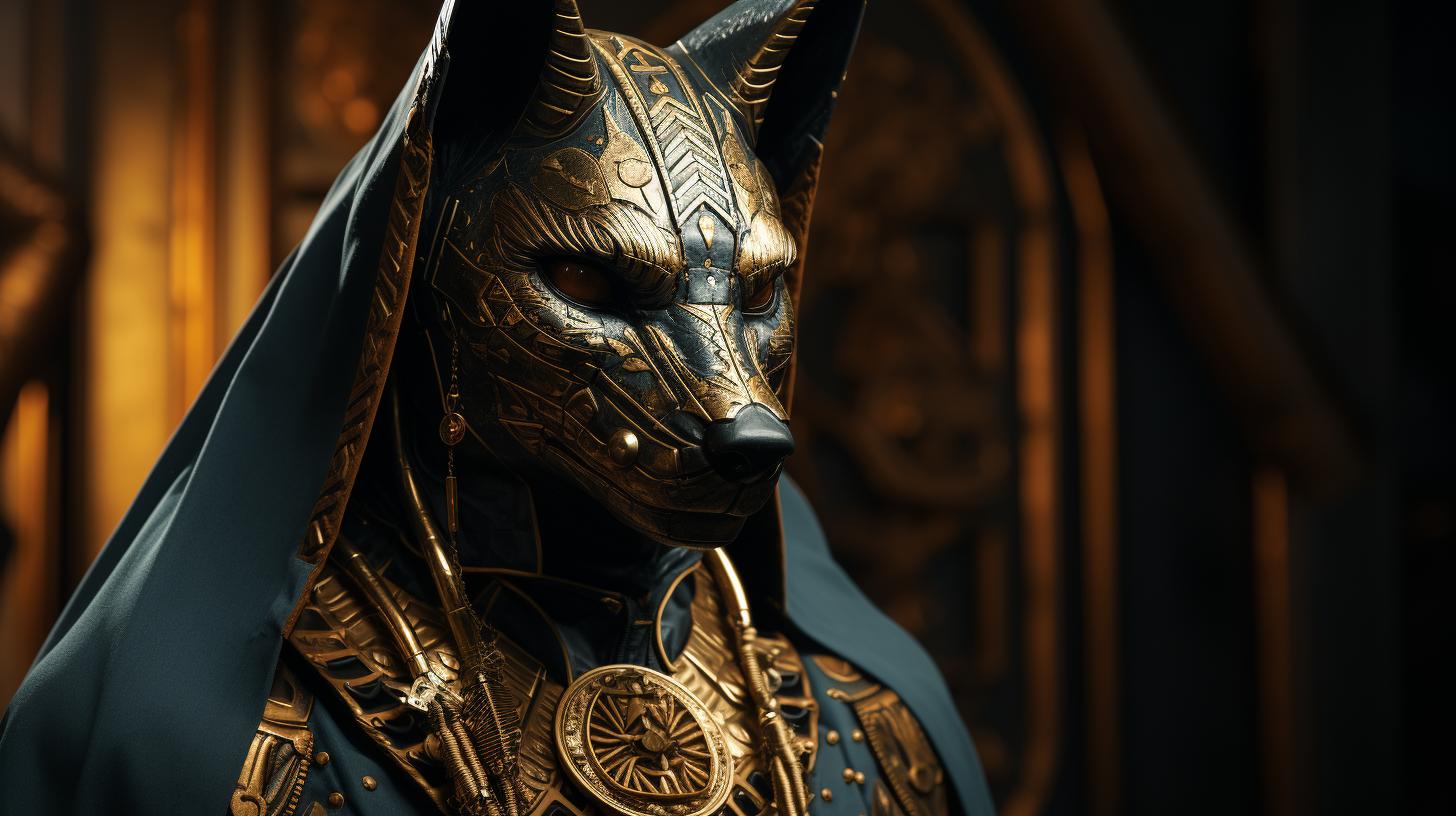The Egyptian Goddess Mut of Family
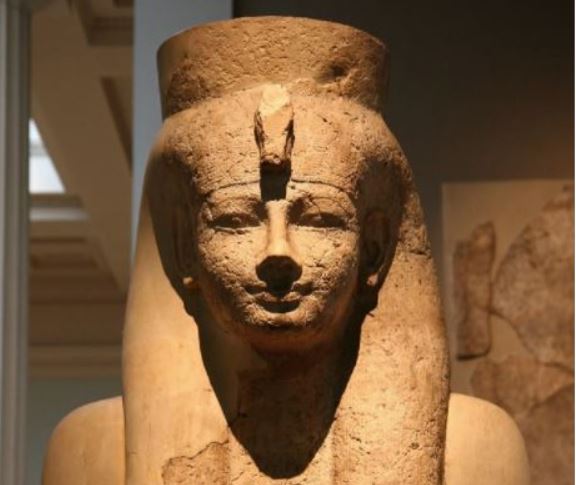
The Egyptian goddess Mut is a primeval deity who emerged from the ocean abyss that is Nun then later gave birth to the first gods of Egypt.
Mut is an older deity that is sometimes depicted as a crone. She is the consort of Amun-Ra, the ultimate creator of life and mother of Khonsu, god of the moon.
The Egyptian goddess Mut is depicted as a vulture or a woman with a double crown that is composed of the white Hedjet that represents upper Egypt and the red Deshret that symbolizes lower Egypt.
Mut was worshipped since antiquity in Hermopolis but it was during the New Kingdom when her cult reached its height.
A statue of the Egyptian goddess Mut
What was Mut the goddess of?
As the mother goddess and the mistress of all deities, Mut the Egyptian goddess is considered to be higher or greater than the goddess Isis.
Mut Egyptian goddess: Origin of her Name
The name of the Egyptian goddess Mut name translates to ‘mother’ which fits her role as the great divine mother of all the deities.
History of the Egyptian goddess Mut
In the beginning, there was only infinite darkness and waters of chaos.
The infinite Ogdoad which consists of eight primordial deities ruled this cosmic age. It was Kauk and Kauket who ruled the darkness, Heh and Hauhet were the rulers of infinity, Nun and Naunet controlled the primordial waters, and Amun and Amaunet were the rulers of everything hidden.
From the primordial waters of Nun, the Egyptian goddess Mut emerged and later gave birth to the first gods of Egypt. As the celestial world flourished and the human race formed, the cult of Mut began to rise in the Nile River delta.
For thousands of years, the ancient dwellers of this part of the Nile worshipped Mut as their local deity.
According to some ancient texts, the goddess Mut emerged directly from the Nile River in order to give life to everything in the world.
Together with her son Khonsu and companion Amun-Ra, they formed the Theban triad. They were believed to be a powerful force that protected Egypt against illnesses and omens.
During the 18th dynasty in Egypt, the devotion to Amun-Ra was heightened by the new and younger government officials who acquired their education from the religious temples.
As the consort of Amun-Ra, Mut became a celebrated goddess, and festivities were held in her honor. Pharaohs and queens of Egypt would claim to have descended directly from the goddess Mut to secure the throne.
King Ramses II with the Egyptian goddess Mut and the god Amun-Ra
Mut Egyptian goddess powers
As the mother of all creation, it was believed that the Egyptian goddess Mut had a divine power to protect Thebes from its enemies. She is the giver of life but also has the power to take it.
Mut Egyptian goddess symbols
The goddess Mut is popularly depicted as a vulture. Let us take a deeper look at why is this her main symbol.
Mut goddess symbol: the vulture
The ancient Egyptians perceive their gods through nature and the reason why animals are significant in their belief and worship. Vultures protect their young by covering them with their expansive wings.
The vulture, the main Mut symbol
The ancient Egyptians perceive this as a maternal attribute and have created a version of this animal through the goddess Mut.
Just like the vulture, the Egyptian goddess Mut is also a gentle goddess but she will not hesitate to use her divine powers to protect her child and her people.
As seen in the ancient hieroglyphics, the name of the goddess Mut is represented by the vulture which is also the same symbol for the word ‘mother.’
Some Mut goddess facts
The cult of the Egyptian goddess Mut grew even larger in the time of the New Kingdom when Egypt was in the process of reuniting the realm.
Mut’s crown represents all of Egypt and it served to inspire unity among the people through worship. Aside from her double crown, the goddess is also depicted with an ankh in one hand. It is an ancient hieroglyphic symbol that represents life.
A representation of the Egyptian goddess of the family Mut
On her foot is the feather of the goddess Ma’at that is used in weighing the hearts of the newcomers in the underworld.
In some ancient texts, Mut was believed to be the daughter of Ra that has also become the Eye of Ra.
It is the reason why Mut is also depicted as a woman with the head of a lioness.
The ancient Egyptians respect the ferocious animal and have associated it with the warlike attribute of the goddess Mut who is the Eye of Ra, a ferocious force capable of destruction.
As we have already stated, the Egyptian goddess Mut is part of the Theban triad that was once a strong structure of religious veneration and devotion in Thebes.
She was perceived not only as a nurturing mother but also as a very wise old woman. The high priestesses of the Egyptian goddess Mut were no less than the pharaohs and queens of Egypt.
She is believed to have empowered the rulers of the land to lead with love and honor. The ancient rulers of the realm would profess that they have descended from her so that they can acquire the right to rule.
In return, they would honor the goddess with their daily rituals. The worship of the goddess of the family Mut did not cease even when the Macedonian Greek royal families ruled Egypt.
They have embraced the Egyptian religion and have often maintained the temple of the goddess. The Precinct of Mut in the city of Luxor which is modern-day Thebes is a standing witness of the priestesses and pharaohs who once honored their daily rituals to the queen goddess.
The temple’s precinct of the Egyptian goddess Mut
Mut is not only an Egyptian goddess for she was also widely worshipped in Sudan.
The Temple of Mut in Jebel Barkal is not only a place of worship for it also served as a place to crown the new kings in old Sudan.
Influence of the Egyptian goddess Mut in modern times
Religion was everything for the ancient Egyptians. Because of their belief and worship, they have created the most incredible infrastructures that baffle the world up to this day.
The cult of Mut may have subsided but it doesn’t mean that she can not be channeled by the people of this modern world.
The Egyptian goddess Mut represents purification and rebirth. Channeling her is like empowering your inner wisdom to fly so that you may summon the better version of yourself.
The ancient deities have inspired the Egyptians to do great things with the guidance of their divine mother, Mut. She embodies the attributes that the people of all eras and races should emulate.

